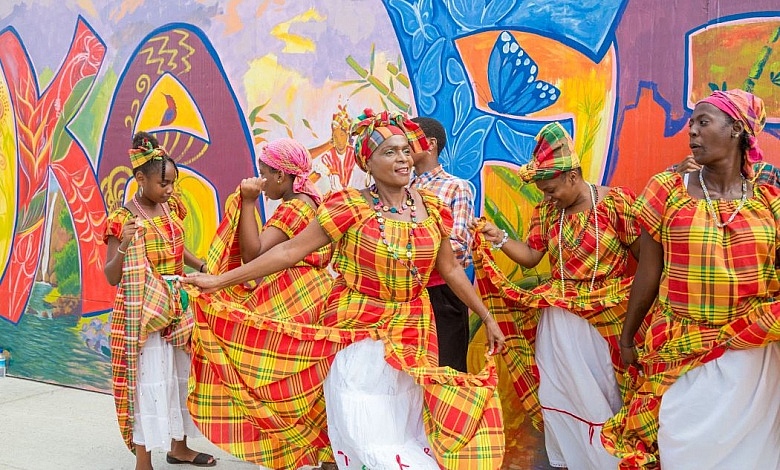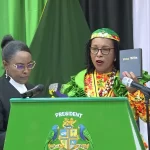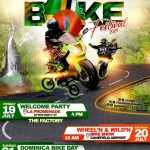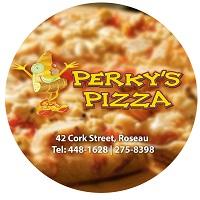Cultural Landscape of Dominica

The Cultural Landscape of Dominica is a vibrant expression of the island’s rich history, diverse heritage, and stunning natural landscapes. It showcases the fusion of indigenous traditions, African influence, European heritage, and contemporary Caribbean life, weaving together a unique identity full of life yet deeply connected to the past.
Dominica’s Cultural Landscape, an Overview
Various peoples and events have shaped Dominica’s cultural landscape over centuries. The original inhabitants, the Kalinago, Dominica’s indigenous people, arrived around 1000 AD. They named the island Waitukubuli, meaning “Tall is her body,” a testament to its mountainous terrain. The Kalinago established villages along the coast and inland, such as in the present-day Kalinago Territory, preserving their customs and way of life despite colonisation challenges.
European contact began when Christopher Columbus sighted the island in 1493. However, due to fierce resistance from the Kalinago, significant European settlement did not occur until the 17th century. The French and the British vied for control over the island, leading to a complex colonial history. The Treaty of Paris in 1763 ceded Dominica to the British, but French influence remained strong, evident in the language, place names, and Roman Catholic traditions.
The transatlantic slave trade profoundly impacted the island’s demographic and cultural landscape. Enslaved Africans were brought to work on plantations cultivating sugarcane, coffee, and cocoa. This led to the development of Maroon communities in the rugged interior, where escaped slaves preserved African traditions and resisted colonial rule. The blend of indigenous, African, and European cultures gave rise to the Creole identity central to Dominica’s cultural landscape today.
Indigenous Heritage: The Kalinago People
Despite centuries of external pressures, the Kalinago people have maintained a distinct cultural identity. The Kalinago Territory, located on the east coast, is home to approximately 3,000 Kalinago people. Here, traditional practices such as canoe building, basket weaving using larouma reeds, and herbal medicine are preserved. The Kalinago Barana Autê, a cultural village in Crayfish River, serves as a living museum, showcasing traditional dwellings, crafts, and rituals. Visitors can learn about the Kalinago’s connection to the land and sea, which remains integral to their way of life.
African Heritage and the Legacy of Slavery
The arrival of enslaved Africans between the 17th and 19th centuries brought significant cultural contributions. African languages, music, dance, and religious practices merged with European and indigenous elements to create a unique Creole culture. The development of Kwéyòl, a French-based Creole language, became a unifying element among the diverse population. Music and folk dance forms such as Bélé, Quadrille, and later bouyon music emerged, blending African rhythms with European instruments and melodies. Religious practices also evolved, incorporating African spiritual beliefs into Christianity, resulting in syncretic traditions that persist today.
Cultural Expressions
Dominica’s cultural landscape is expressed through its festivals, music, art, and culinary traditions. These expressions celebrate the island’s heritage and play a crucial role in community life.
Festivals and Celebrations
Carnival, locally known as Mas Domnik, is rooted in pre-Lenten traditions. It features Calypso Monarch competitions, Queen shows, costume parades like J’ouvert and Jump-Up, and incorporates traditional characters like Sensay, Bwa Bwa, and Lapeau Kabwit bands.
The World Creole Music Festival, established in 1997, is another major event that promotes Creole music genres such as zouk, kompa, kadans, and bouyon. Bouyon music, developed in the late 1980s by bands like WCK (Windward Caribbean Kulture), is a fusion of traditional rhythms with modern elements, including calypso and soca, and continues to evolve with artists like Triple Kay International and Asa Banton.
Independence celebrations on November 3rd commemorate Dominica’s independence from Britain in 1978. The festivities feature cultural performances, traditional dress days, and community activities that showcase national pride and heritage.
Music and Dance
Traditional music and dance are integral to Dominica’s cultural expressions. Bélé is a folk dance with African roots, performed with drumming and call-and-response singing. Quadrille, originally a European dance, has been adapted with Creole influences.
Art and Craft
The visual arts scene in Dominica is rich and diverse. Artists like Earl Etienne and Arnold Toulon capture Caribbean life and landscapes through painting, emphasizing natural beauty and cultural scenes. Handicrafts remain an essential part of the cultural landscape, with the Kalinago renowned for their intricate basket weaving and calabash art. Wood carvings depicting folklore and daily life are also popular, preserving traditional skills and providing economic opportunities for artisans.
Culinary Traditions
Dominican cuisine reflects the island’s multicultural heritage. The national dish was once the Mountain Chicken, a type of frog now endangered and protected. Traditional dishes feature staples like plantains, yams, dasheen, and breadfruit. Pepper pot, a slow-cooked stew with meats and local vegetables, is a favourite. Creole influence is evident in dishes like accras (fried fish cakes) and bakes (fried dough served with fillings like saltfish). These culinary traditions are celebrated during festivals and are essential to social gatherings.
Language and Education
Language plays a crucial role in Dominica’s cultural identity. English is the official language used in government, education, and formal settings. However, Kwéyòl, or Creole, is widely spoken, especially in rural areas and in cultural contexts. Kwéyòl evolved from French and West African languages and symbolised the island’s Creole identity. Efforts to preserve and promote Kwéyòl include Espéwéyans Kwéyòl, Creole Heritage Month and Creole Day, which is celebrated annually to encourage its use and appreciation.
Festivals in schools encourage youth participation, ensuring cultural knowledge and practices are transmitted.
Preservation of Heritage
Dominica is home to several organizations dedicated to preserving its rich cultural and natural heritage. Notable among them are:
- Society for Heritage Architecture Preservation and Enhancement (SHAPE): Established in the mid-1990s, SHAPE focuses on conserving Dominica’s historic buildings and architectural heritage. The organization has been instrumental in restoring significant historical sites and promoting awareness about the importance of preservation.
- Dominica State College offer programs in arts and culture, fostering the next generation of cultural practitioners.
- Division of Culture: This governmental body coordinates cultural activities across the island. It is pivotal in preserving and promoting Dominica’s cultural heritage through various programs and initiatives.
- WildDominique: A conservation organization committed to preserving Dominica’s unique natural resources. WildDominique focuses on environmental education, community engagement, species preservation, and sustainable practices to protect the island’s biodiversity.
- Create Caribbean Research Institute: Affiliated with the Dominica State College, this institute partners with community organizations to design and produce projects centered on cultural heritage and preservation. It also provides research support and educational technology services to the academic community.
These organizations collectively contribute to safeguarding Dominica’s heritage, ensuring that its cultural and natural treasures are preserved for future generations.
The preservation of historical sites like Fort Shirley in Cabrits National Park and Morne Trois Pitons National Park, a UNESCO World Heritage Site since 1997, highlights the importance placed on heritage conservation.
Influential Personalities in Cultural Development
Several influential figures have played pivotal roles in shaping and preserving the island’s rich cultural landscape.
- Gordon Henderson, a music pioneer and founder of the band Exile One in the 1970s, revolutionized Caribbean music by creating the Cadence-lypso genre. By blending Haiti’s Cadence Rampa with Calypso, Henderson’s innovation influenced music across the region and introduced a dynamic new sound to the world.
- Ophelia Marie, celebrated as the “First Lady of Song,” further popularized Cadence-lypso during the 1970s and 1980s. Her music transcended borders, showcasing the island’s unique sounds on international stages and bringing greater recognition to its cultural identity.
- Dr. Lennox Honychurch, an esteemed historian and author, has been a key advocate for heritage preservation. His seminal work, The Dominica Story: A History of the Island, meticulously documents the island’s history, culture, and natural heritage, fostering a deeper understanding and appreciation of its past. His contributions to education and conservation have been instrumental in ensuring that the island’s history is preserved for future generations.
- Jean Rhys, born in Roseau in 1890, gained global acclaim for her novel Wide Sargasso Sea. This literary masterpiece explores themes of identity, colonialism, and cultural displacement, cementing her legacy as one of the Caribbean’s foremost literary figures.
- Leaders such as Edward Oliver LeBlanc, the island’s first Premier, have also made lasting contributions. LeBlanc championed cultural identity and agricultural development, emphasizing self-reliance and nation-building during his tenure.
- Similarly, Phyllis Shand Allfrey, a writer and politician, left an indelible mark on national identity. She founded the Dominica Herald newspaper and authored the acclaimed novel The Orchid House, a poignant reflection on colonialism and societal transformation.
- Finally, Alwin Bully, the designer of the national flag, played a vital role in the arts and cultural development as a playwright, educator, and administrator. His leadership in creating cultural programs and promoting artistic expression has left a profound legacy in the island’s creative industries.
Tourism plays a significant economic role, with eco-tourism and cultural tourism leveraging natural beauty and cultural experiences. Festivals, heritage sites, and community tourism attract visitors worldwide, contributing to economic growth and cultural exchange.
The Dominica diaspora also promotes culture abroad, with communities in countries like the United States, Canada, and the United Kingdom organizing cultural events and maintaining connections to their heritage. Participation in regional festivals like CARIFESTA (Caribbean Festival of Arts) fosters cultural exchange and strengthens regional ties.
Contemporary Challenges and Developments
Dominica continues to face challenges such as natural disasters, including hurricanes, impacting infrastructure and heritage sites. However, the people’s resilience is evident in their efforts to rebuild and preserve their cultural landscape. Modern developments aim to balance economic growth with cultural and environmental preservation, ensuring that traditions are not lost amidst globalization.
Influence on the Caribbean Region
Dominica’s cultural landscape contributes to the broader Caribbean identity. The island’s commitment to cultural preservation and promotion is a model for other nations. Dominica shares its heritage with the world through music, art, literature, and festivals, enriching the global cultural mosaic.
Celebrating Dominica’s Cultural Richness
Dominica’s cultural Landscape is a dynamic and evolving mosaic that honors its rich history while embracing modern influences. From the enduring traditions of the Kalinago people to the vibrant expressions of music and dance, Dominica’s culture is a testament to its people’s resilience and creativity. The island continues to celebrate and preserve its unique identity, contributing to the broader tapestry of Caribbean culture and inspiring future generations.




